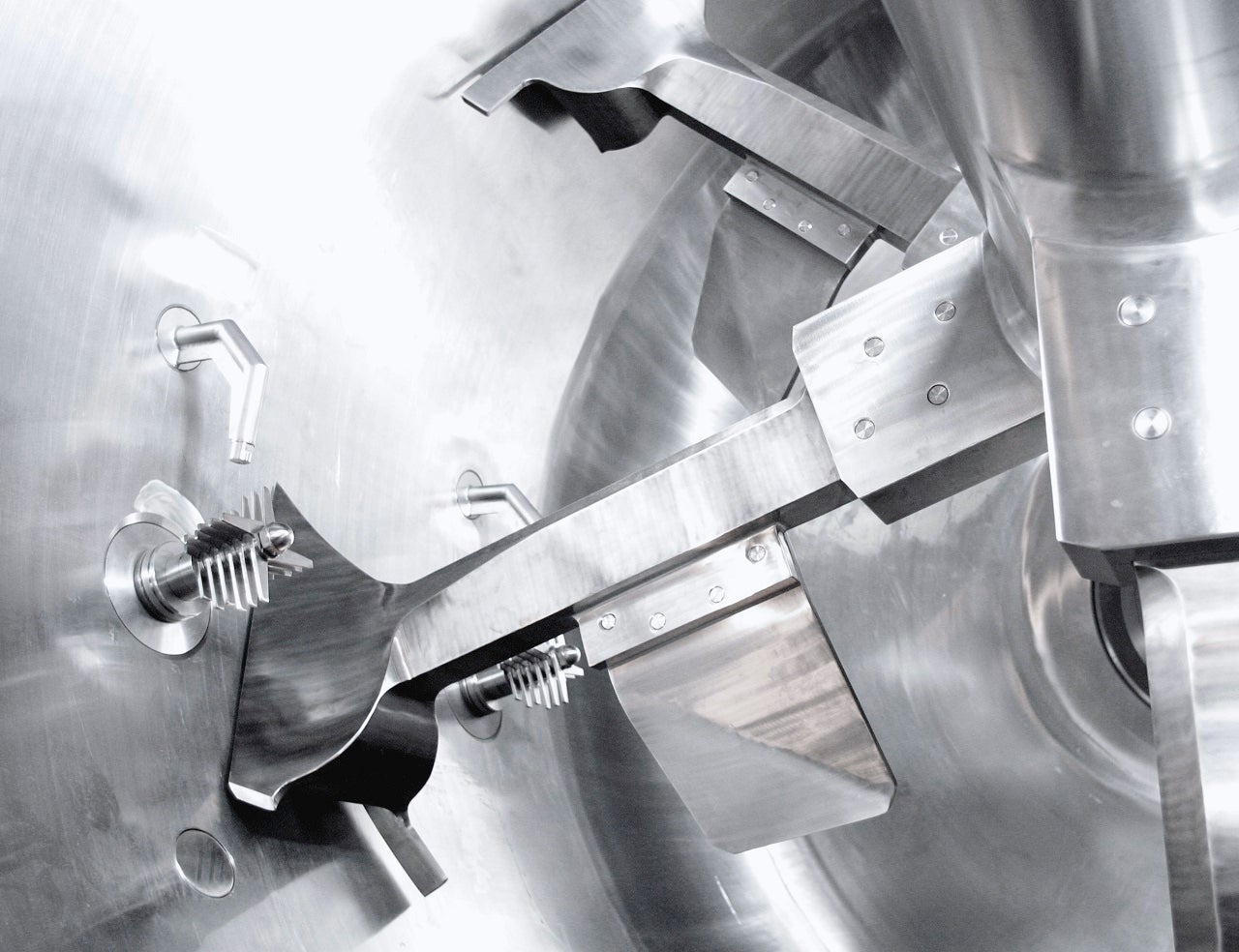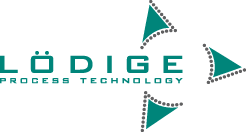
In industrial production processes, chemical reactions are generally part of a multi-stage process chain consisting of the synthesis process itself and a number of upstream and downstream processing steps. The Reactors of Lödige Process Technology make it possible to perform several of these steps after each other in the same machine.
One of the most important groups of chemical reactions is solid-liquid reactions. These often require bringing the solid or solids into intensive contact with liquid reacting agents to achieve quantitative conversion in the shortest time possible. In the following, we will take a closer look at the manufacture of metallic soaps. In this application, the reaction and subsequent vacuum drying take place in the Druvatherm® Reactor.
Metallic soaps are made from long-chained fatty acids and a metal oxide or hydroxide. The conversion is, chemically speaking, a typical acid-base reaction. The fatty acids used are often derived from plant-based fats or oils. The technically most significant group of metallic soaps is metallic stearates, which have various industrial applications. Calcium stearate, zinc stearate or magnesium stearate, to name just a few, are used as lubricants and parting agents, stabilisers or hydrophobing agents.
Both the fatty acids and metal oxides or hydroxides are solids that can easily be mixed into a macroscopically homogeneous substance in the Lödige Druvatherm® Reactor. However, on a molecular level, the mobility of ions in these solids is insufficient for them to react with each other within an acceptable time. To increase their speed and reactivity, it is necessary to add water. At increased temperatures of up to 150°C, the exothermic reaction then only takes a few minutes. Intensive mixing is absolutely indispensable to really achieve full conversion. This is the only way to ensure that all fatty acid particles have sufficient contact with the metal hydroxide and the water, to enable the reaction to occur.
As metallic soaps are usually further processed as water-free solids, the product must be dried to remove the added water and water created as a by-product of the reaction. This process can be performed in the same machine. After the chemical reaction, the gauge pressure in the reactor is released and a vacuum applied. The mixing unit once again ensures turbulent mixing and good heat transfer. This allows the moist metallic soap to be dried gently, yet quickly. Choppers fragment any occurring agglomerates so that the moisture inside them can also be quickly removed.
Conversion with short-chained carboxylic acids
The conversion described here can also be performed using short-chained carboxylic acids such as propionic acid or butyric acid. However, as these are liquids under normal conditions, the process is slightly different. In this case, solid metal hydroxide is first of all filled into the reactor, then the acid is added. The significant heat generation caused by the strong exothermic reaction can easily be controlled through regulation of the acid dosage.
Each process step calls for completely different pressure and temperature values. The machine must therefore be designed for these load cycles. When we designed the Druvatherm® Reactors, these changes in loads were taken into account separately for each application. Even short batch times and the associated frequent changes in pressure and temperature can be taken into account. This prevents material fatigue and ensures reliable operation for many years.

